We arrive in Seville by bus from Portugal in just a few hours. We have two sequential home exchanges, giving us almost a month in this Southern Spanish city. We have been here once before many years ago, but only for a few days.
We are both very comfortable in Europe. We have traveled here many times over the years and with Ben’s dual French/US nationality, he has all the administrative advantages of being a European citizen (right to work or live anywhere in Europe, get European healthcare…). I, Peta, fully intend to take advantage of this “stop” to launch the process of applying for my own European passport based on my insider connection with a Frenchman!
Of all the European countries we have spent time in over the years, we are most comfortable in Spain. It is the language. After 6 years of living in Nicaragua, and with Spanish becoming a normal part of our daily lives, we have an immediately positive association. When we were recently in a cab in Portugal, the radio station switched to Spanish. We both had an instant feeling of “home”. And so, though the accent is wildly different from our more, shall we say, “low brow” Nicaraguan Spanish, we relish the linguistic fluency we can have in Spain, a fluency that that has escaped us in so many of the countries our nomadic lifestyle has taken us to, in the last 18 months.
Pues, vamos con nuestra adventura en Seville!
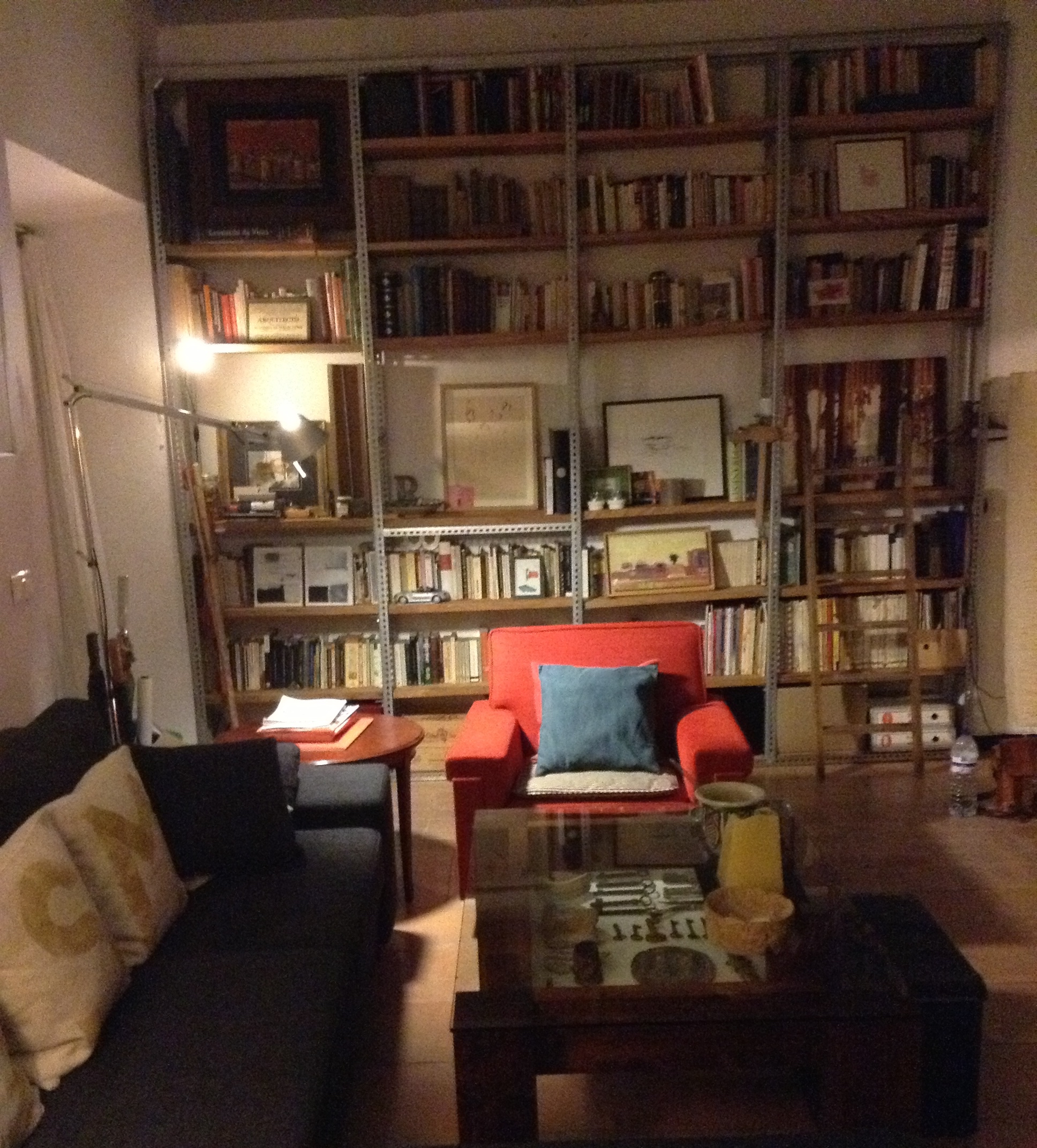
Our first home exchange apartment is super comfy and in a great neighborhood near the Alameda (a wide tree lined central boulevard with tavernas, restaurants and a general buzz of activity.)
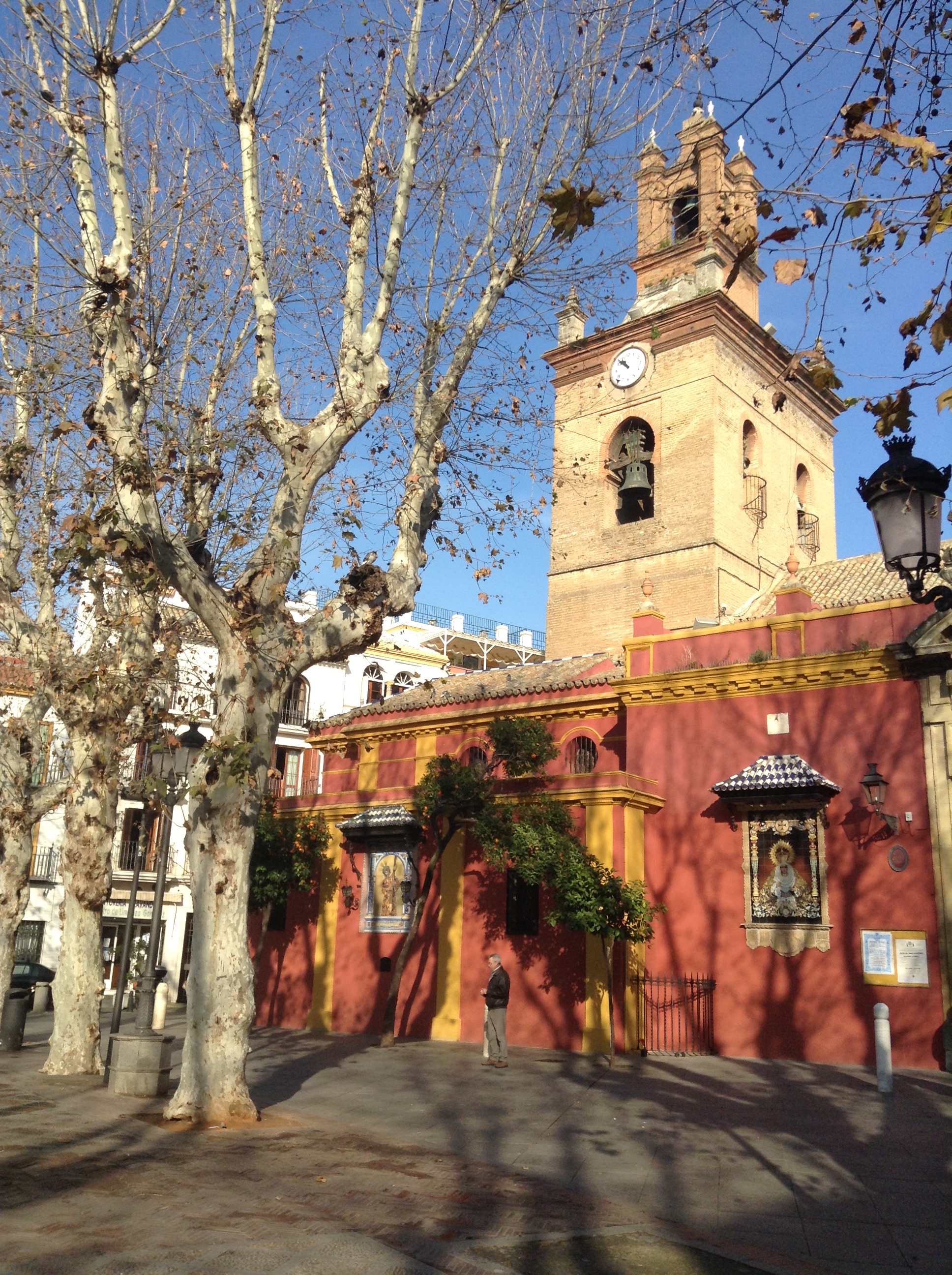
Small sunny plaza San Lorenzo, a few minutes from where we are staying becomes our go to spot for morning croissant, cafe con leche and zumo de naranja – fresh orange juice.
No doubt, successive trips to Sevilla will keep adding layers to what turns out to be an enchanting city. For now, we discover Sevilla through the prism of its architecture, nature and arts….
1) The architecture:
Architecturally, there is not one Seville. There are many Sevilles.
Multiple eras super-imposed, sharing the urban space, reminders that each age contributes through its architecture to the evolving urban narrative that is Seville.
The magnificent tiled buildings of Spanish baroque and Renaissance architecture make up the bulk of the buildings in the historic center. Each building more beautiful than the next, for their design, decorative tile work and roof-top surprises.
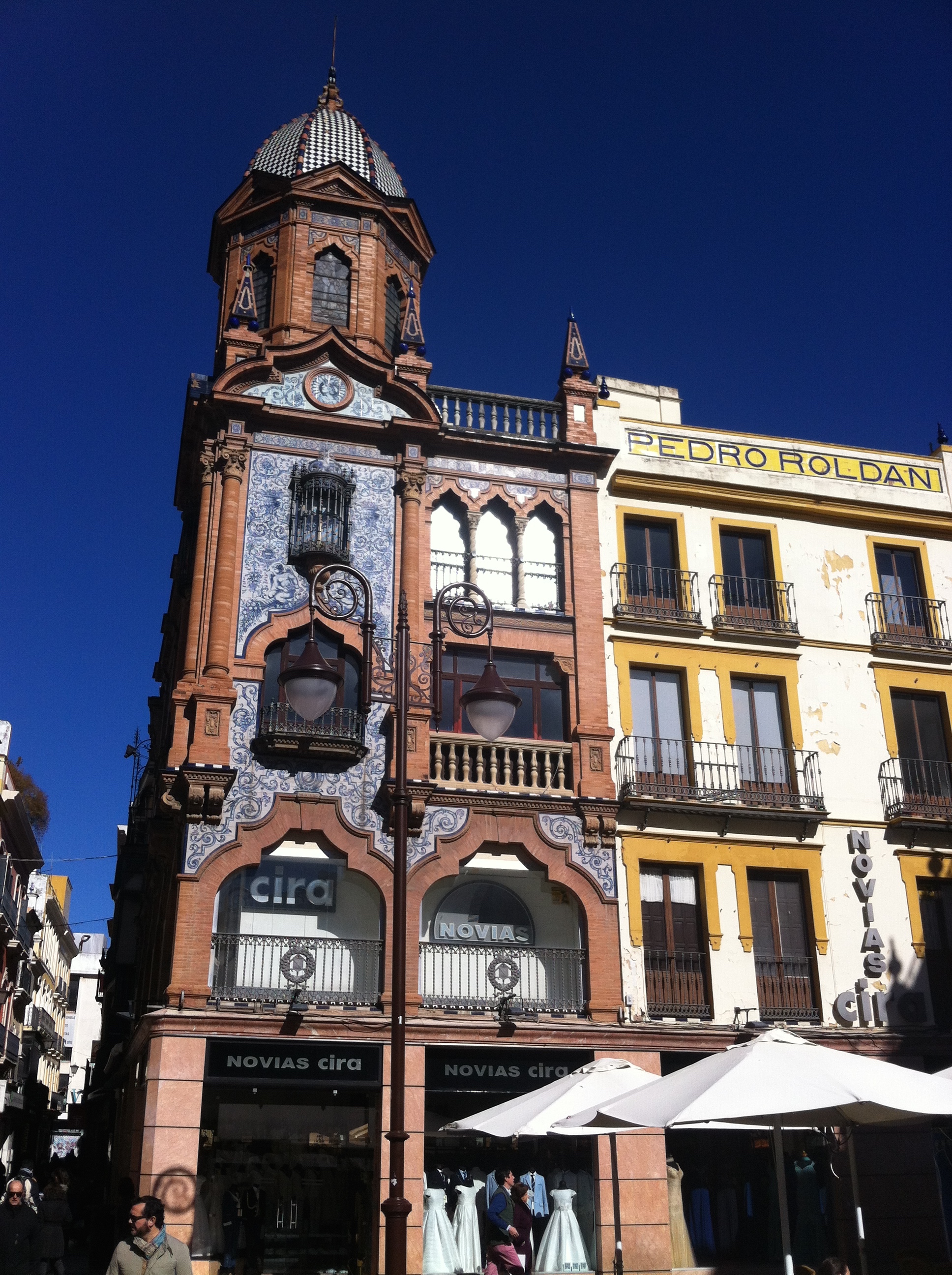
This gorgeous building facing onto a small plaza has a gorgeous tiled dome and blue and white tiles which contrast with the red brick and are enhanced by the arched windows.
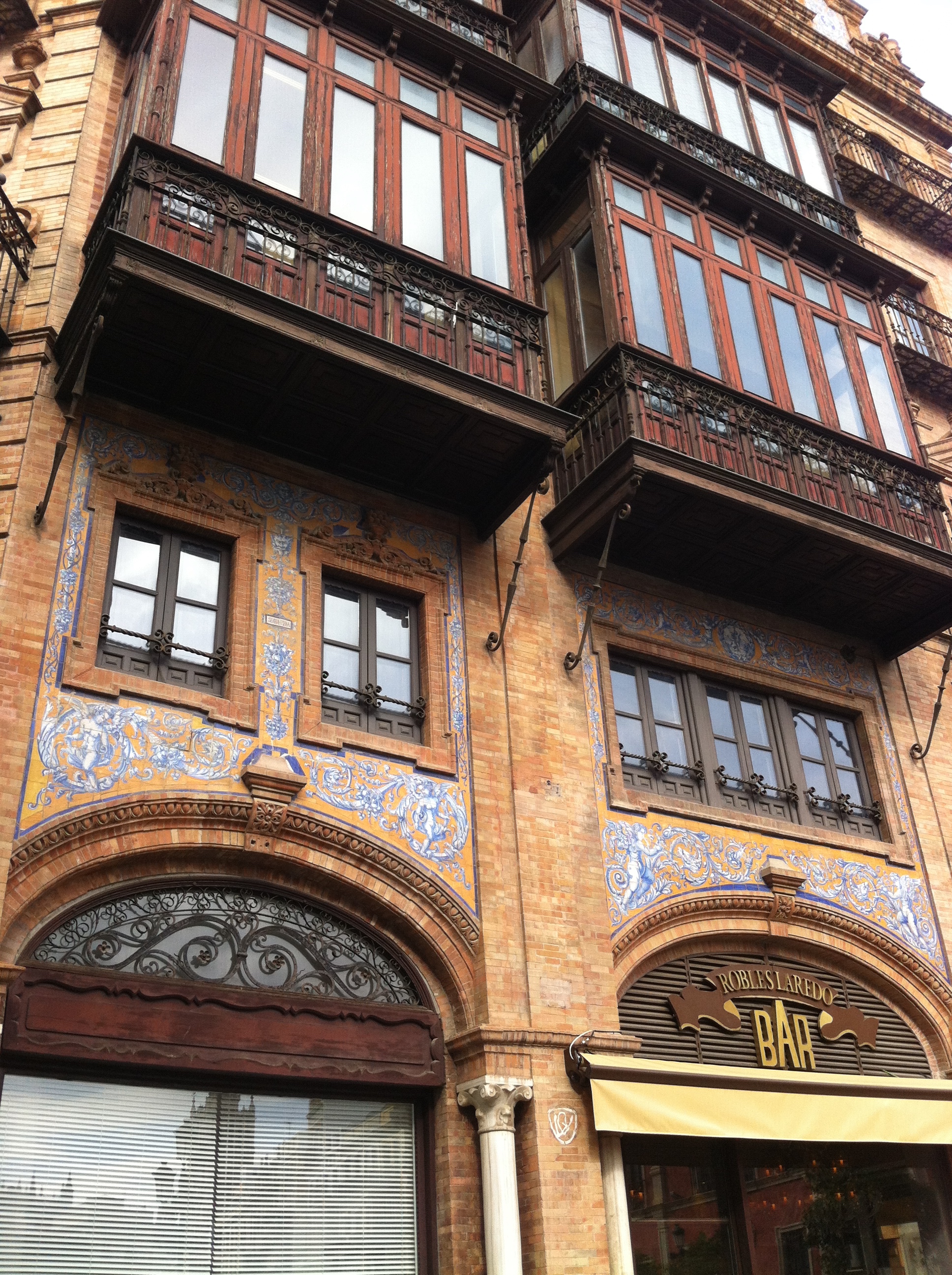
A typically lovely sight as one walks around Seville… Architecturally distinct features incorporating tiles, brick, wrought iron and arches.
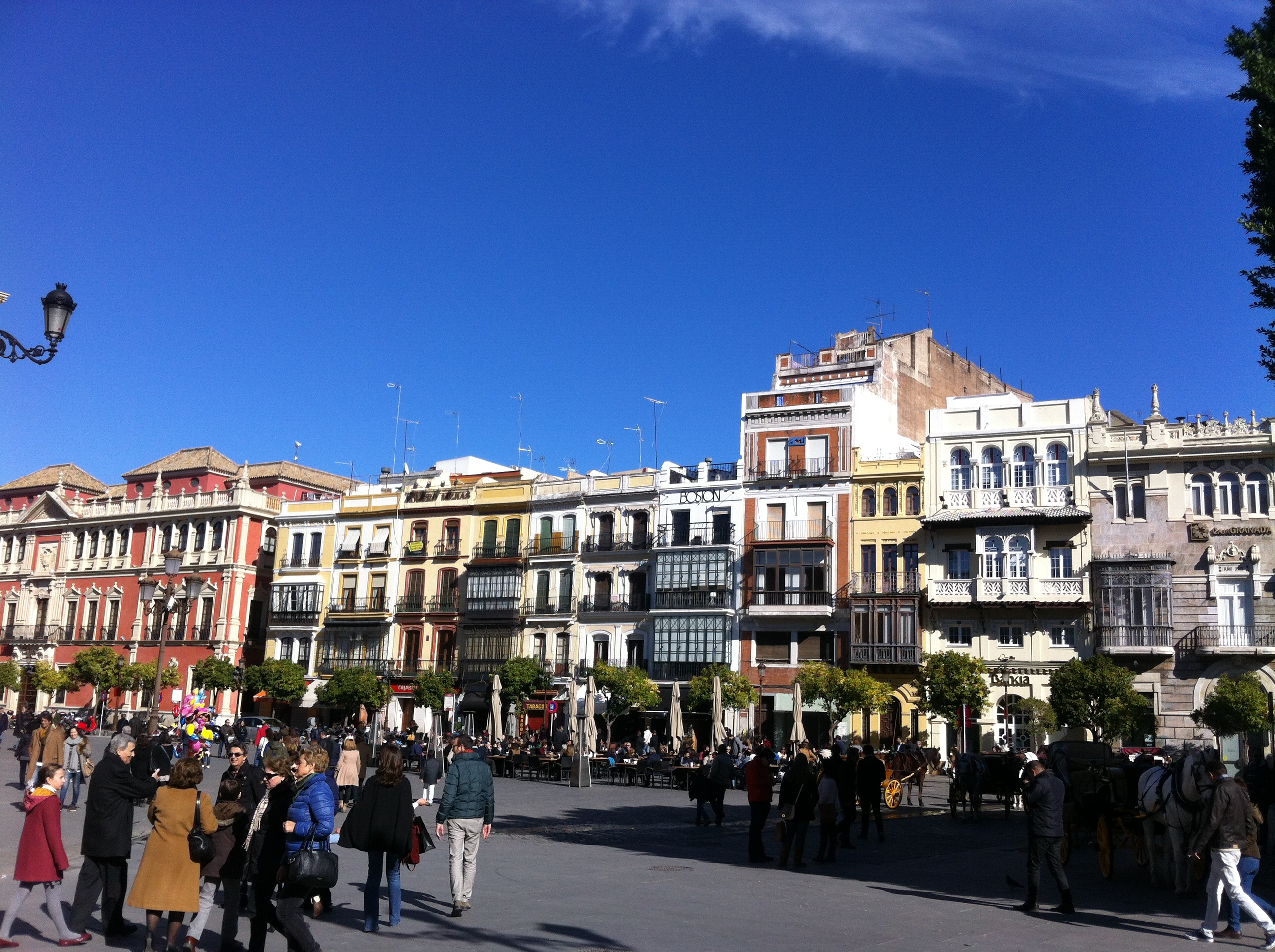
A large central plaza lined with low rise colorful buildings under a blue sky.

Plaza with romantic architecture above and tapas bars below. Beer starts flowing midday and tapas time is 1-4.00 pm.

Church with a gorgeous peachy salmon color against the black night sky.
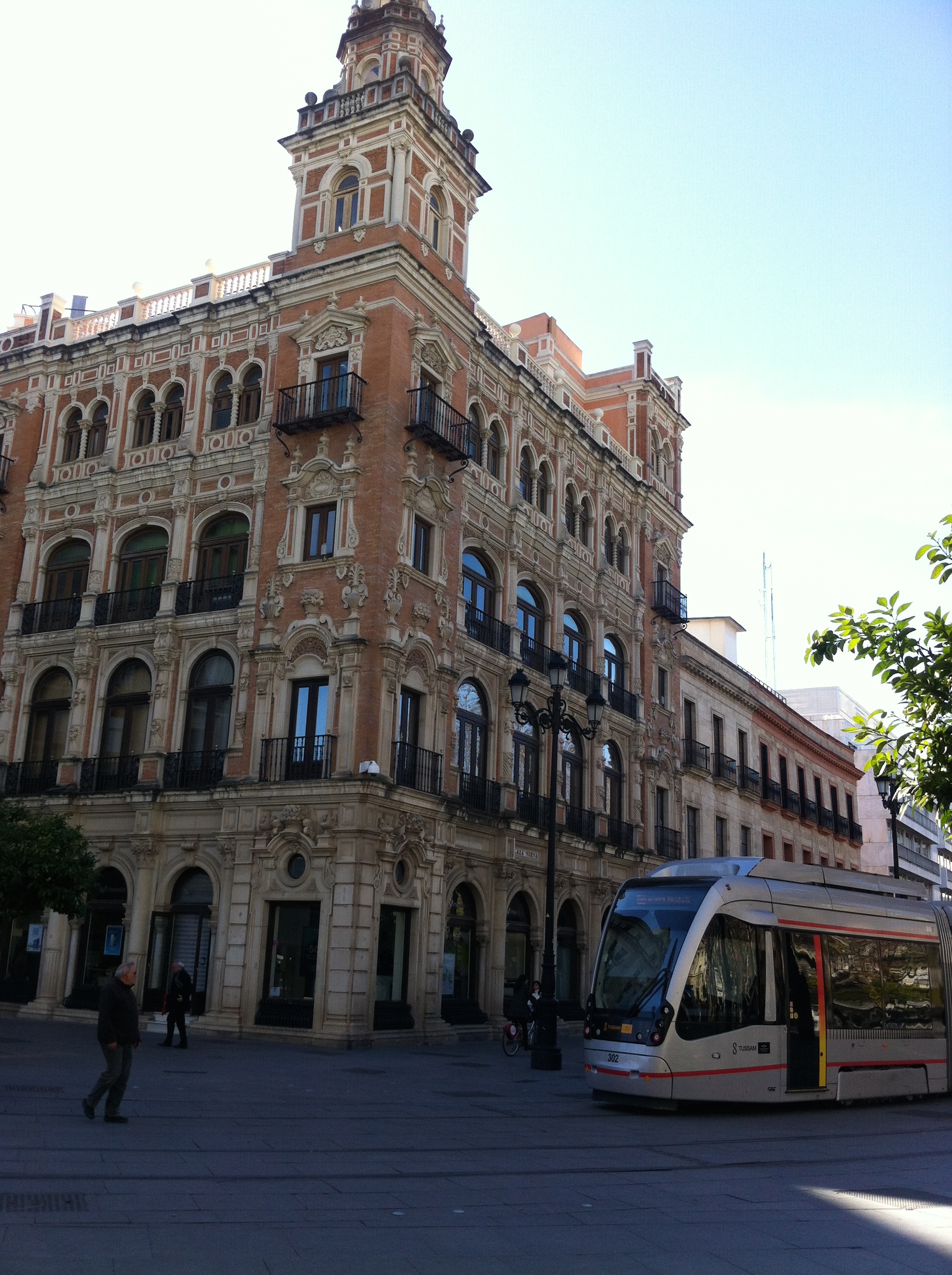
Modern Spanish tram winds through streets with majestic architectural gems from an earlier era.
Centuries before these buildings were built, Seville was already an urban stronghold of the Moorish empire. The ramparts that still contribute to Seville’s urban signature date back to the year 1000 or so.

There are Moorish fortresses in many towns and cities in Spain. The remaining Moorish infrastructure in Seville, is impressive.

The fort is next to Seville’s Cathedral – built to demonstrate the city’s wealth, as it had become a major trading center in 1248. The interior has the longest nave of any Cathedral in Spain.
Leap yet again, this time to turn of the 20th century Art Deco
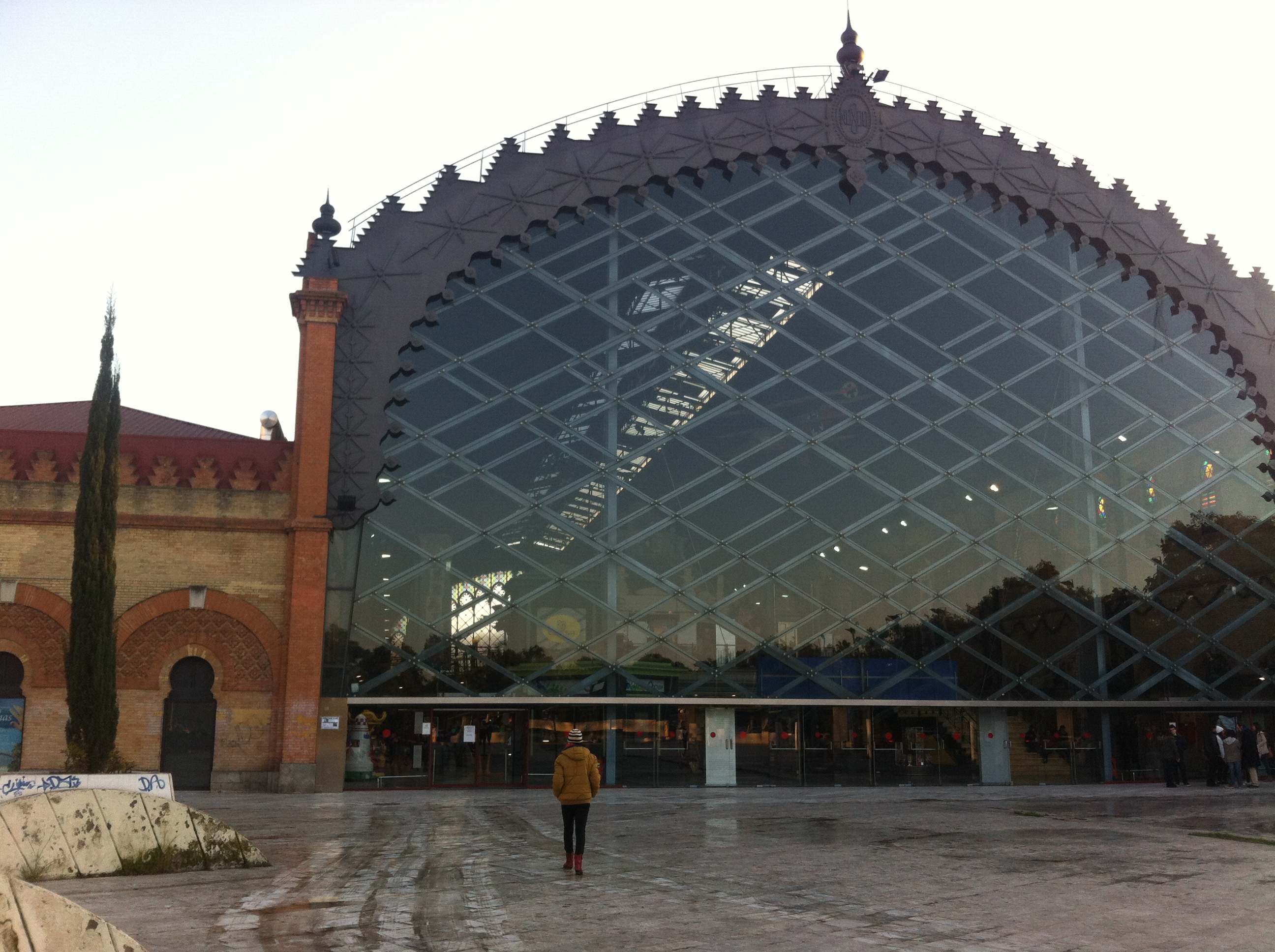
Formerly a train station, now a shopping mall. Art deco of the time remains intact.
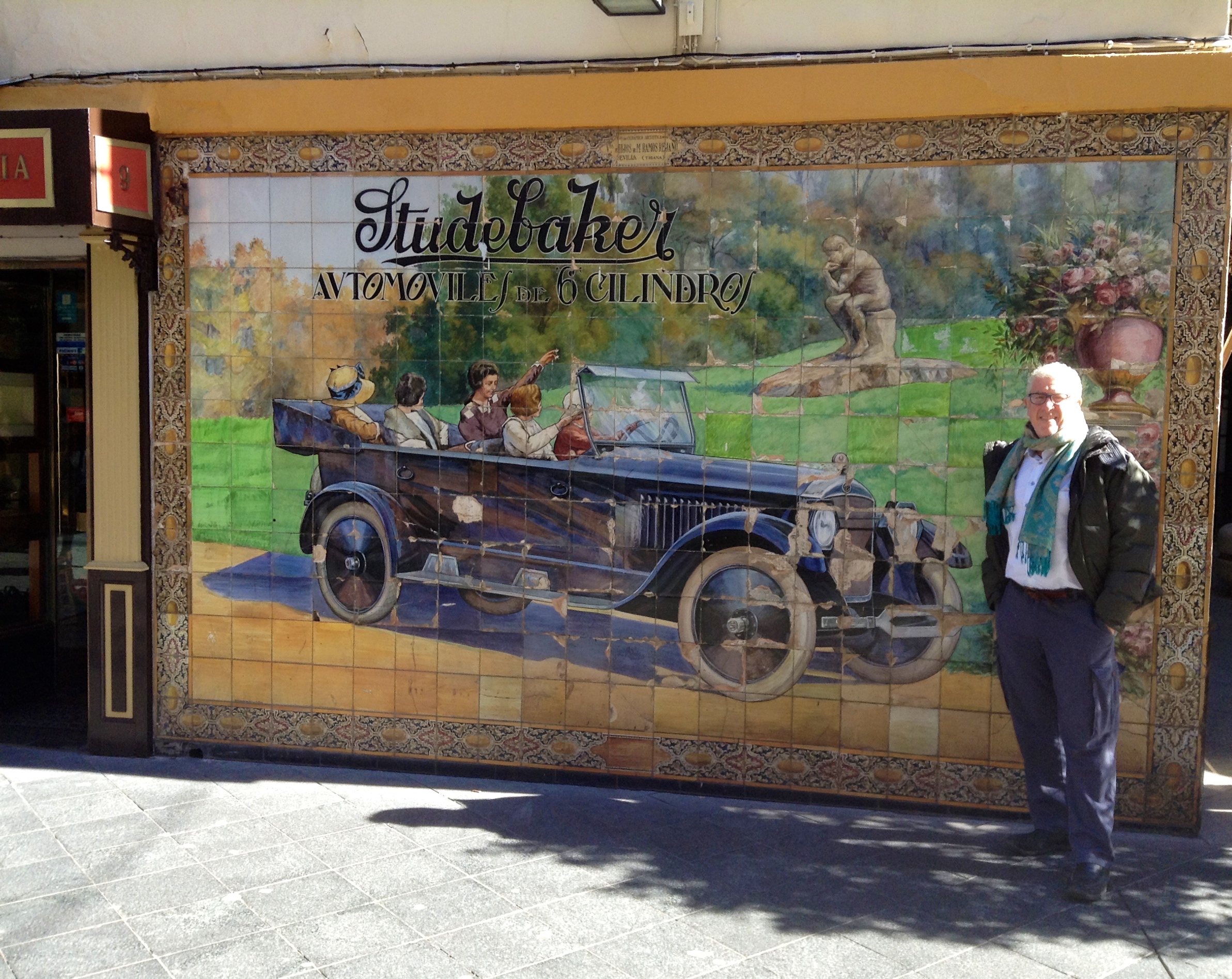
Tile mural outside of a shop in center of Seville’s shopping district.
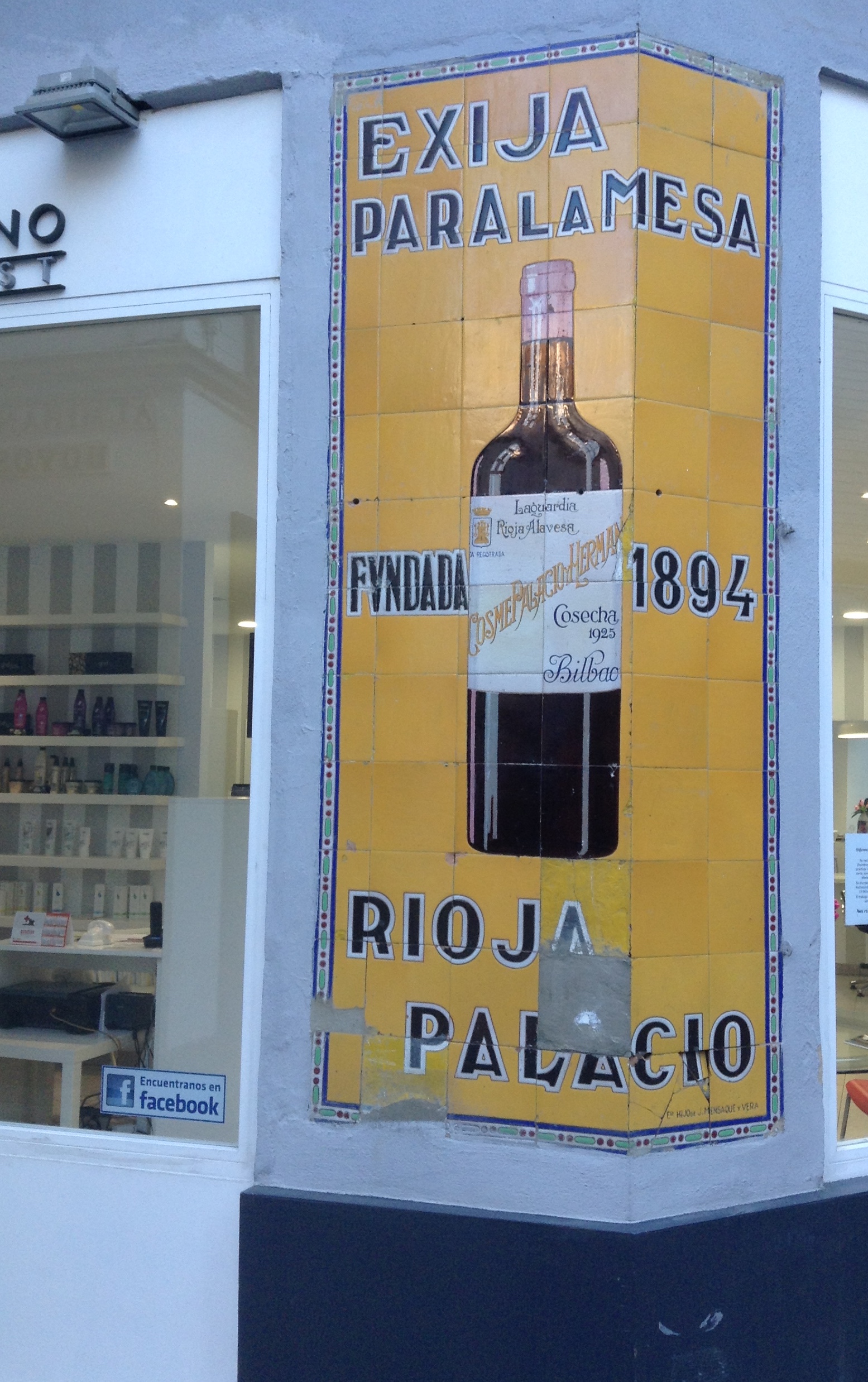
Bright colored tiles were used in turn of the 20th century for advertising and today add to the overall ambience of Seville.
Seville’s ability to capture each age through its architecture is not merely a matter for those discovering the city’s often distant past. Sevillanos continue to mark the city for future generations to look back and be awed. Witness the enormous, modernist structure around the corner from our home-exchange…
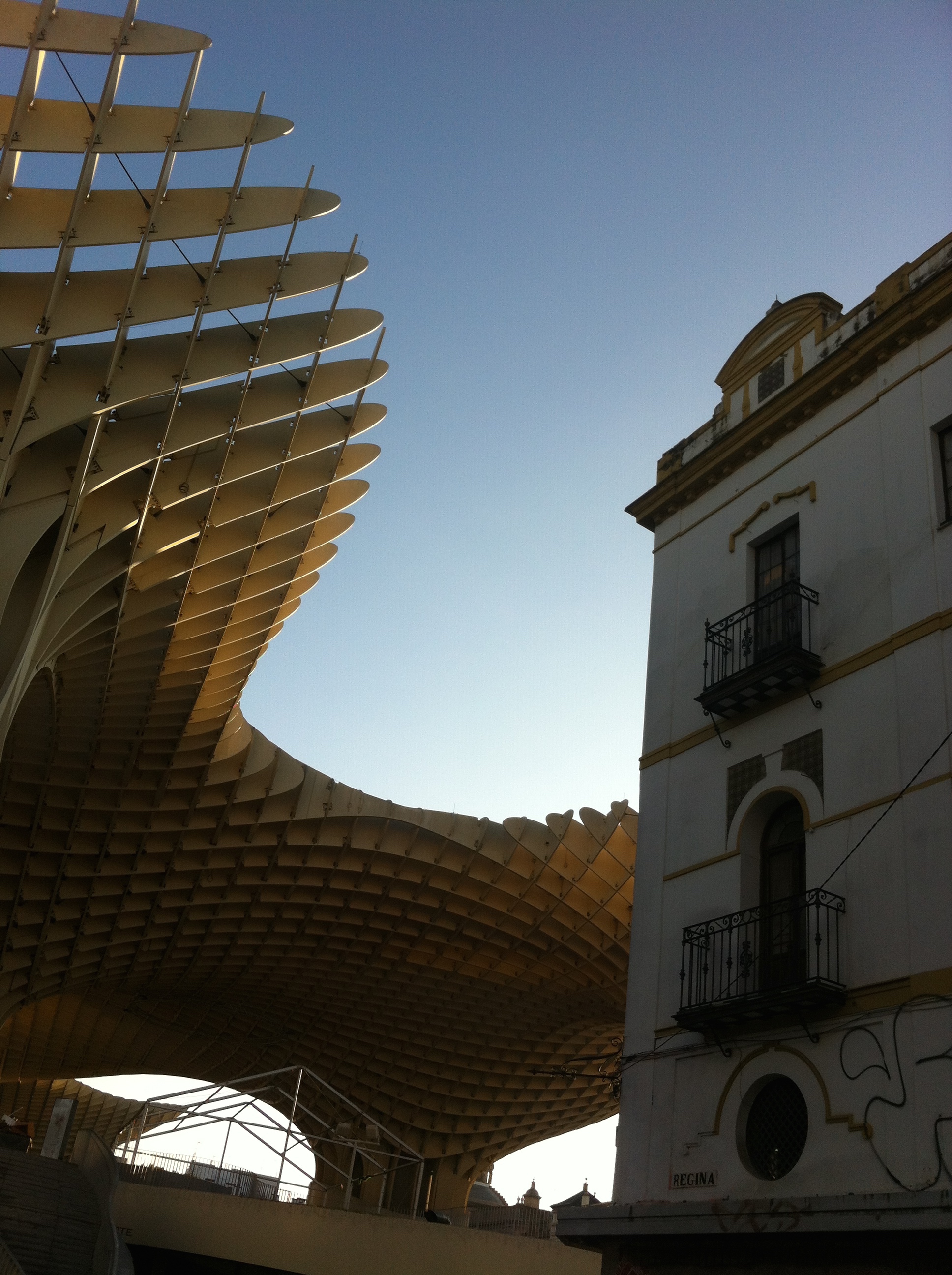
A gigantic surreal sculpture, Metropol Parasol — the world’s largest wooden structure. The Parasol dominates a historic neighborhood. Sevilla is beautiful and it’s cool too…
Of all our architectural discoveries, none perhaps top the grandeur of Plaza de Espana. It is a landmark example of Renaissance revival style in Spanish architecture.
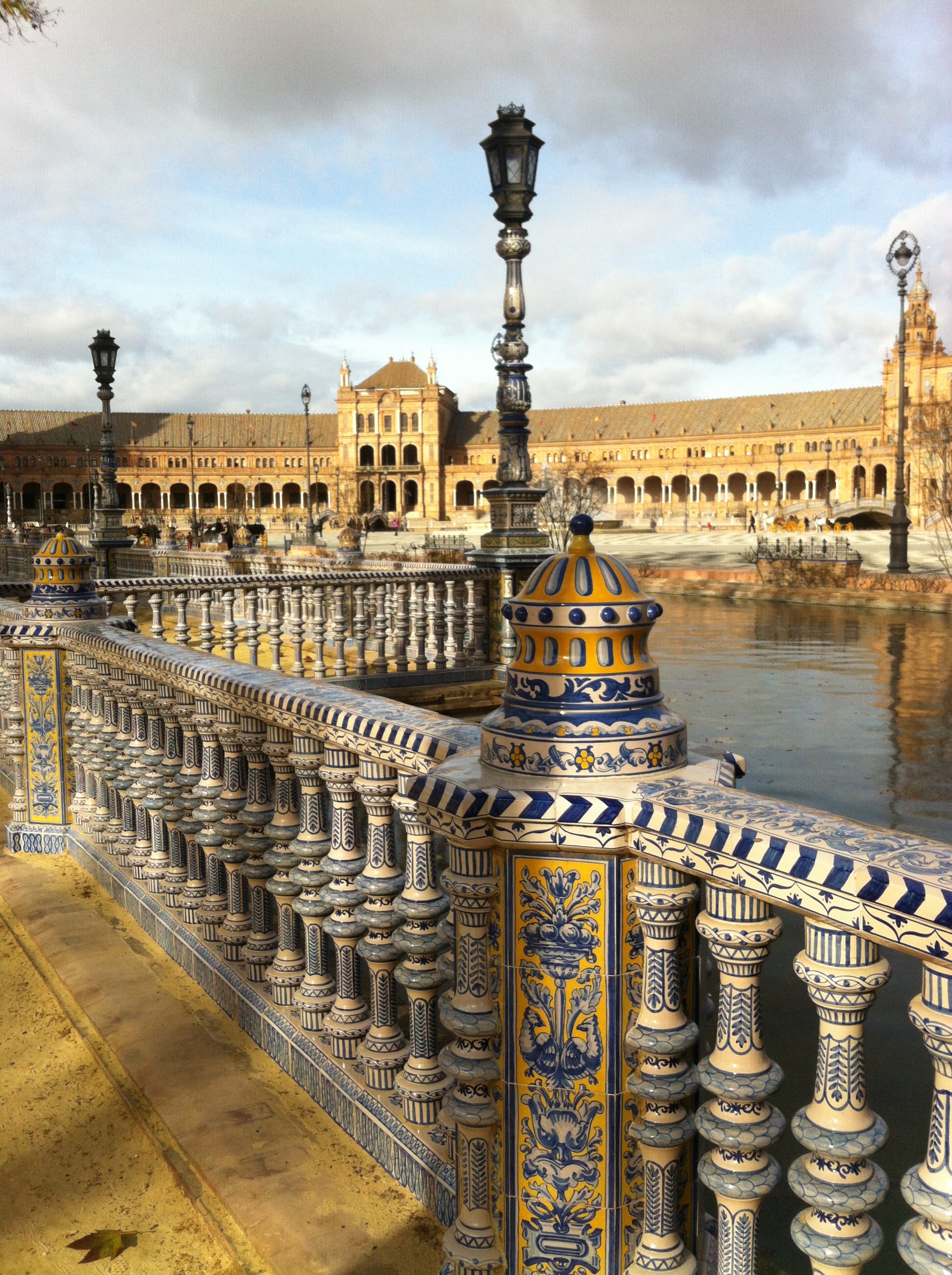
Built for the World Fair in 1929, the Plaza de Espana is like a tiara-shaped jewel of a construction.
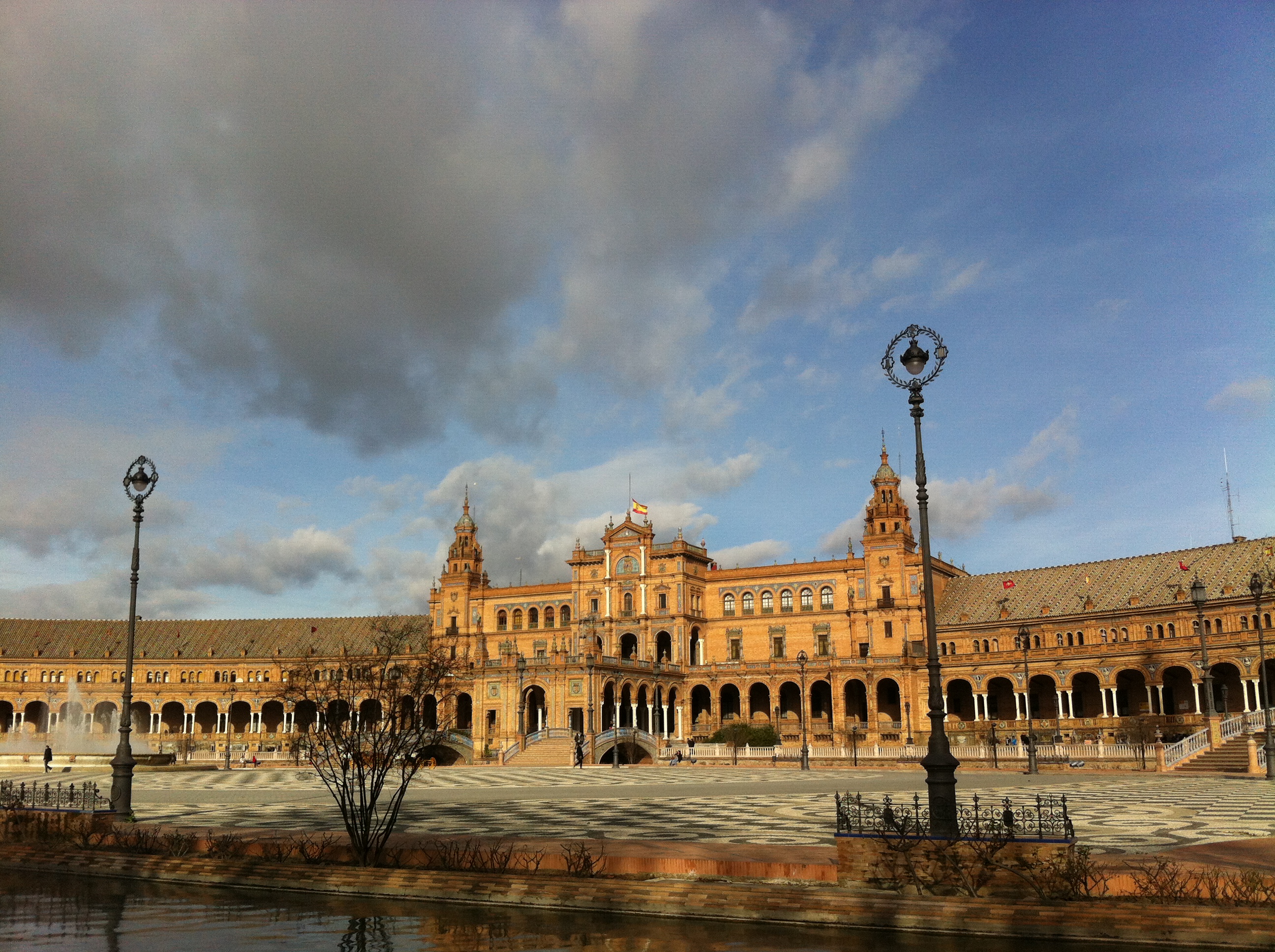

A walk through the park leads us from the Plaza Espana back to the river front.
2) The Guadalquivir river
It winds through the city and its banks are ever welcoming throngs of Sevillanos who pause to enjoy the gentle flow of their river. We come by the river nearly every day for a picnic or a stroll.
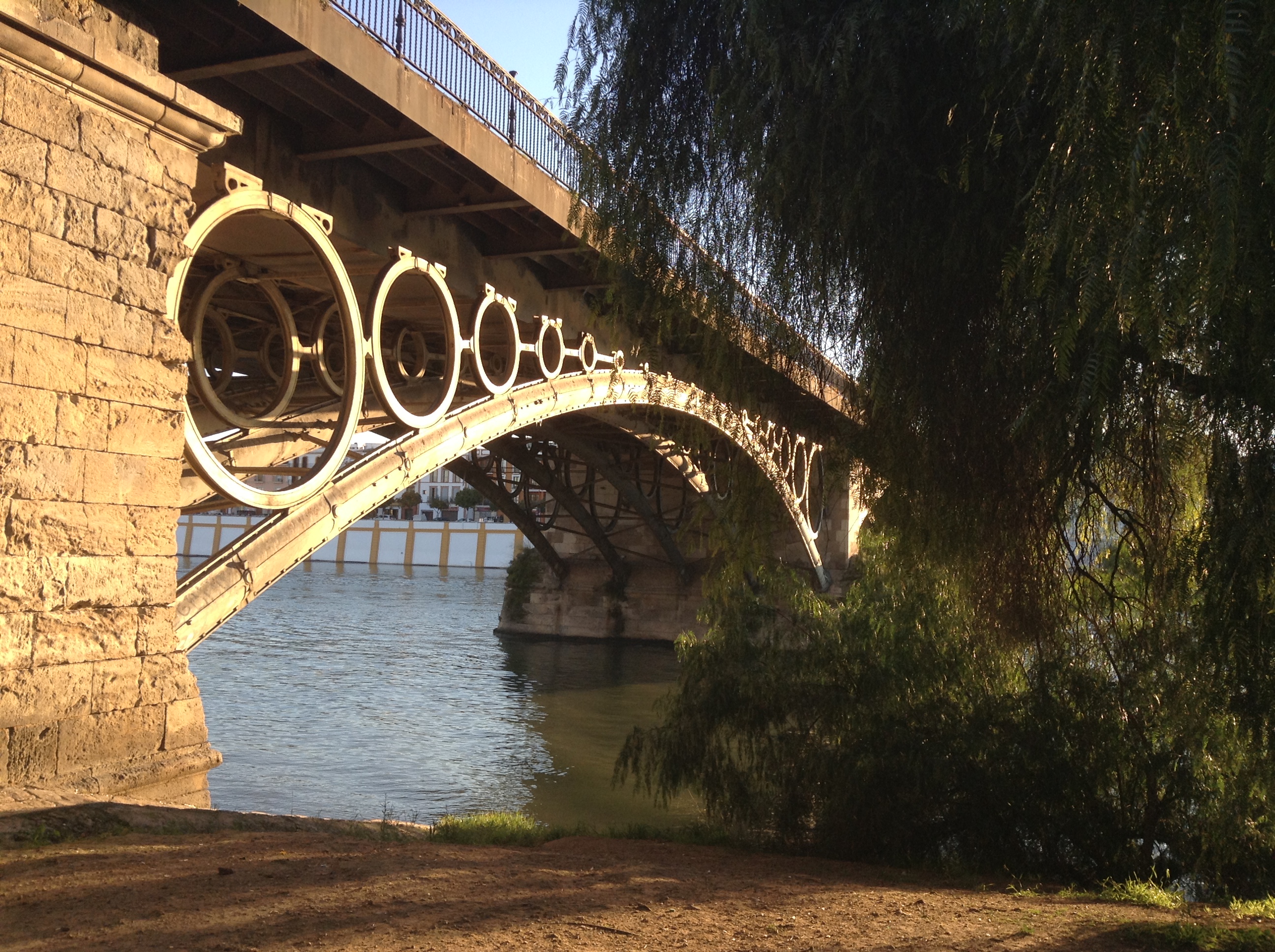
The Puented de Isabel II. This bridge was built in 1852. Beautifully graphic cast iron rings.
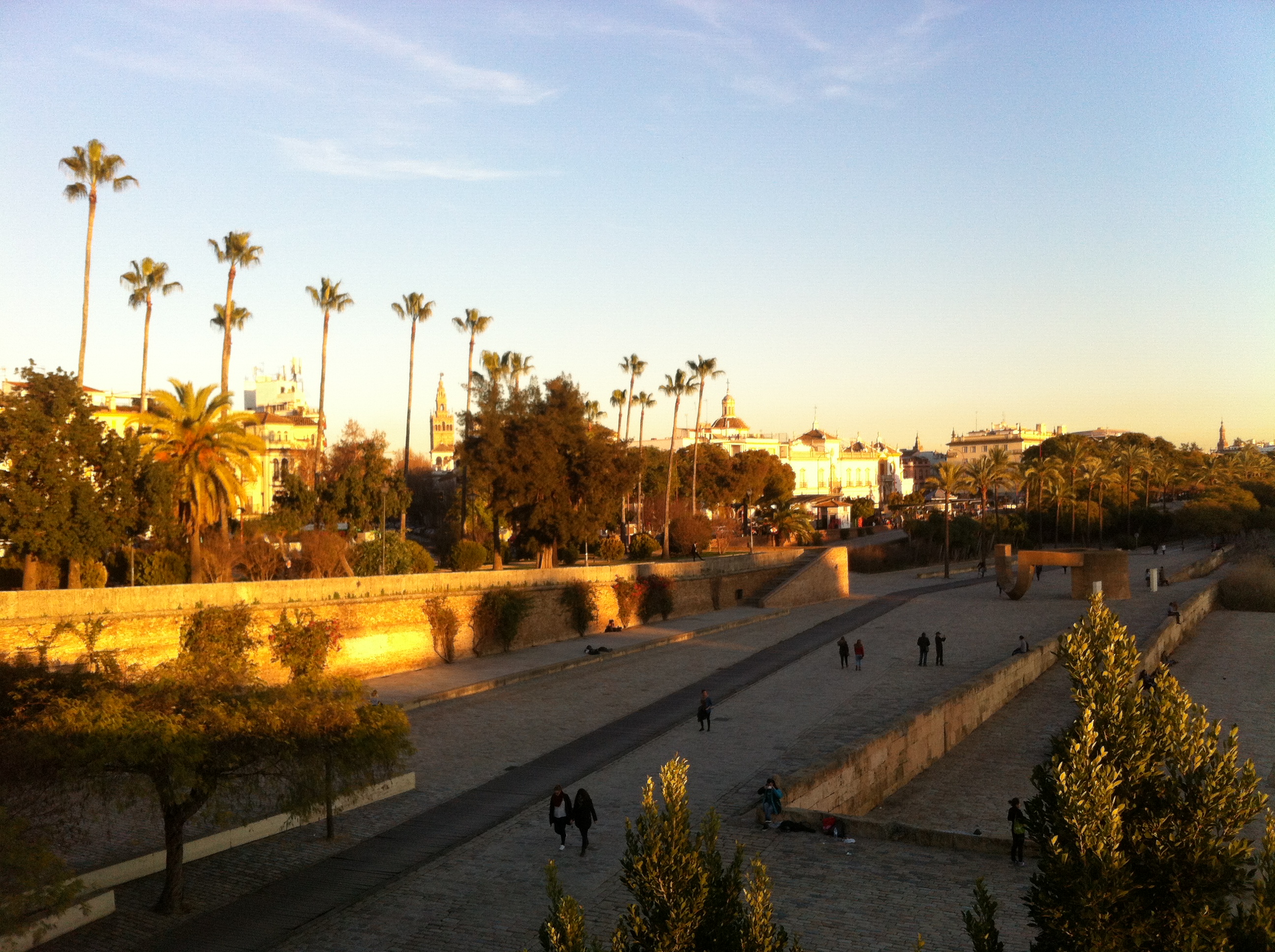
The riverfront in Seville provides a great place for strolling and relaxing.
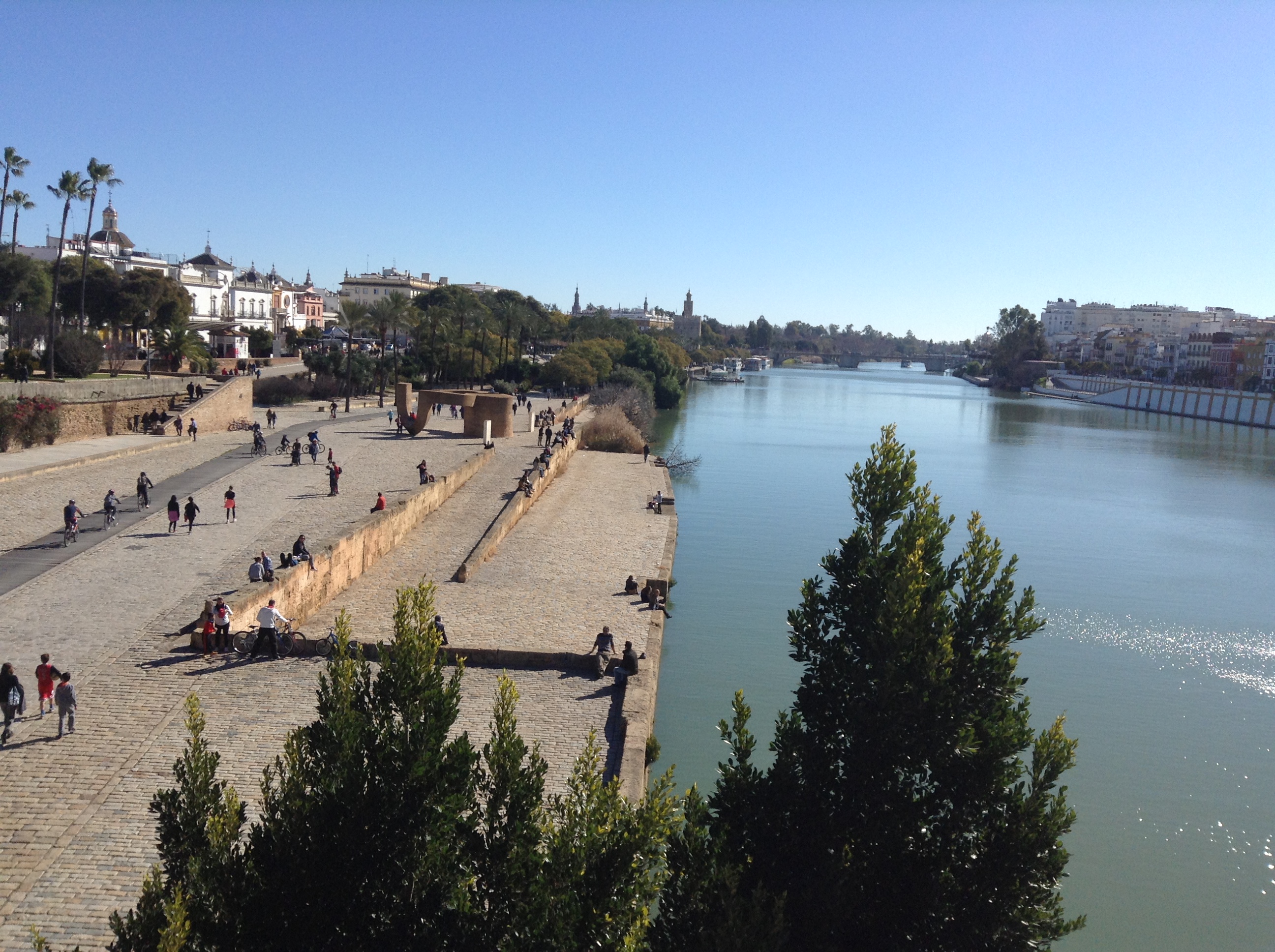
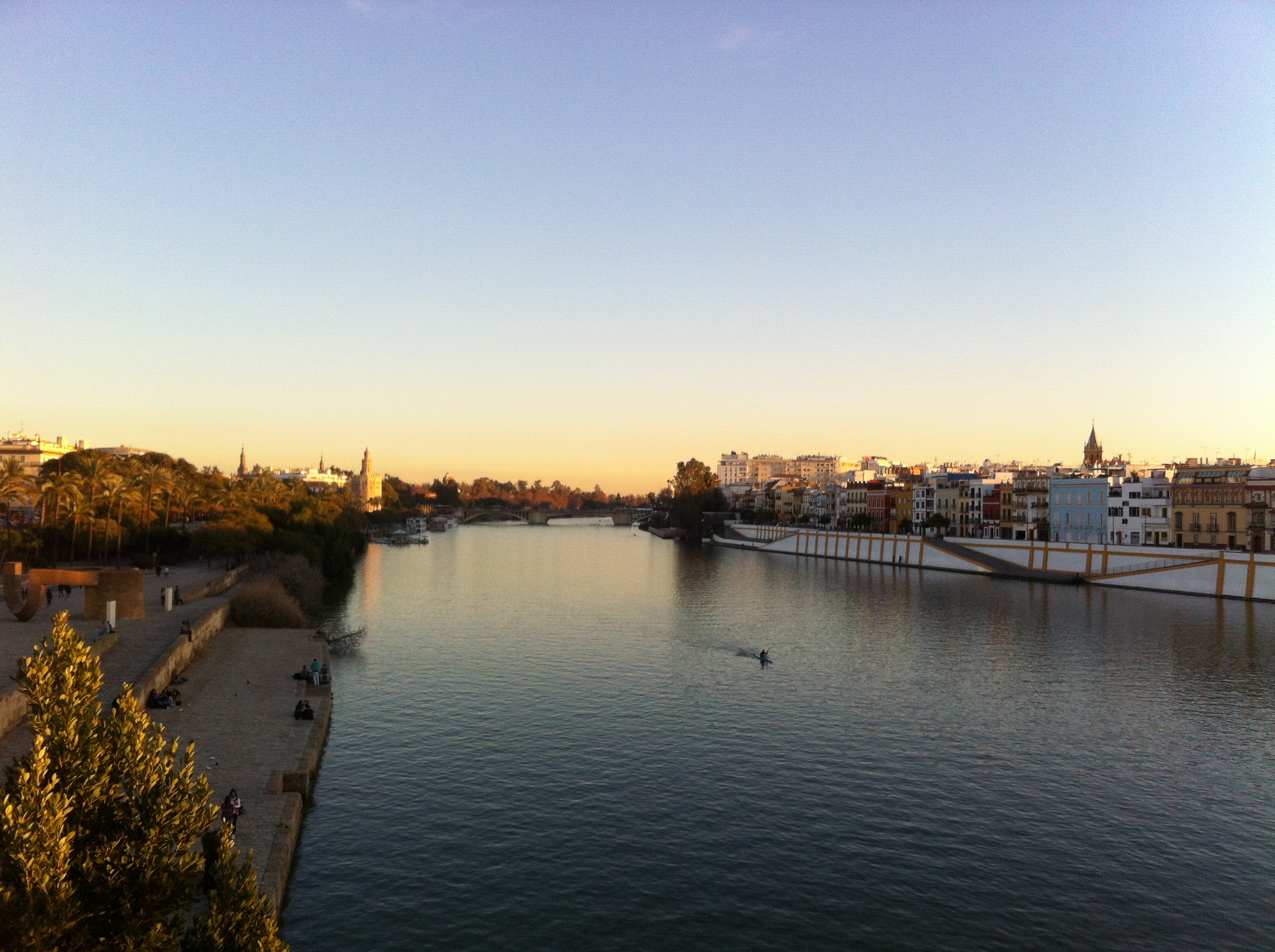
The sun setting over the river.
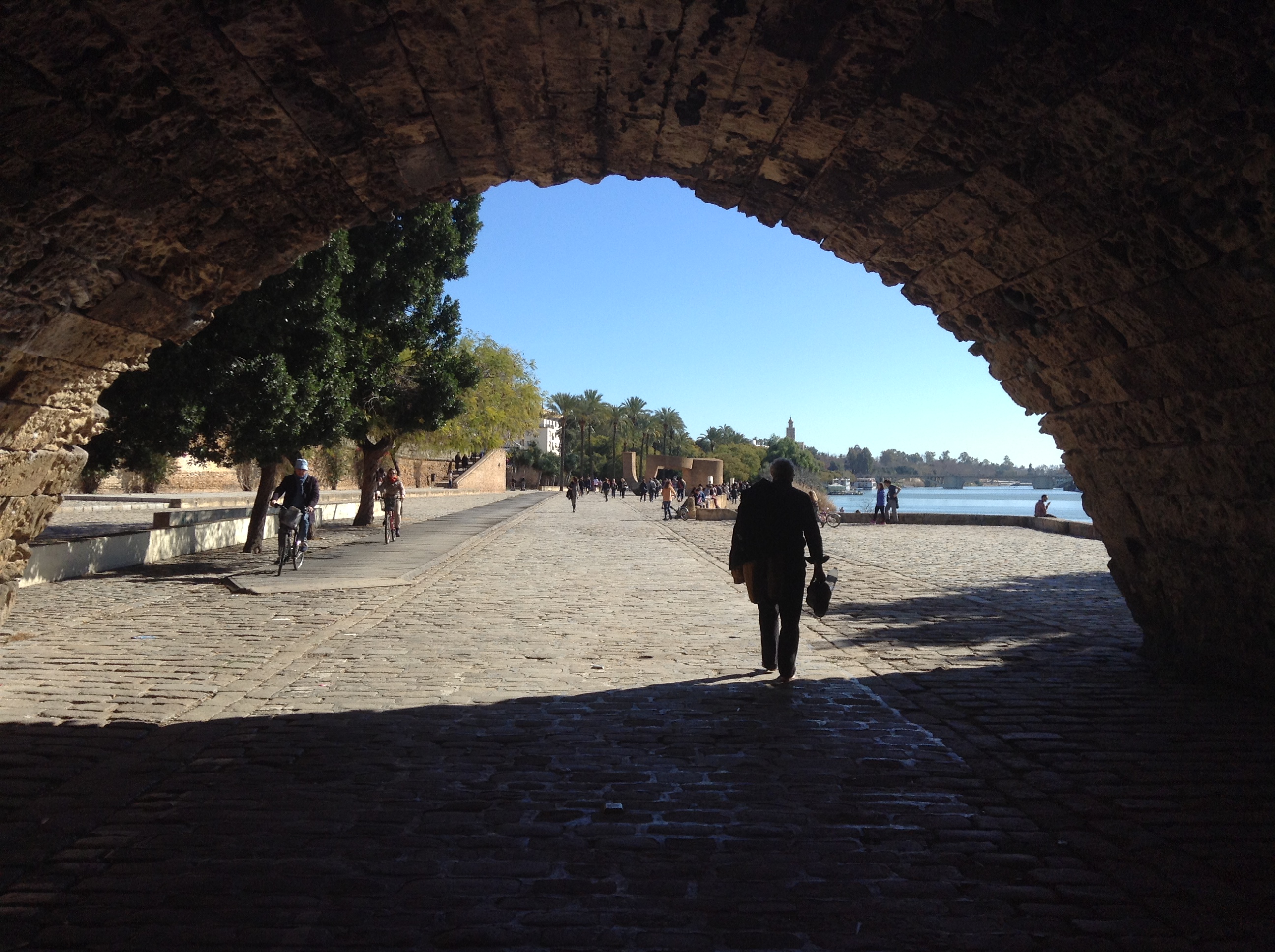

Always fun to have a dog to play with in a park. The river bank attracts lots of people, even during the week ~ no doubt due to the fact that many are currently unemployed, especially young people, due to the economic situation in Spain.
3) The garage doors
OK perhaps these do not quite have the dramatic appeal of the river or the 17th Century architecture of Seville. And yet… there is enough of a display of urban creativity in Seville’s garage door art that we want to give it a shout out…
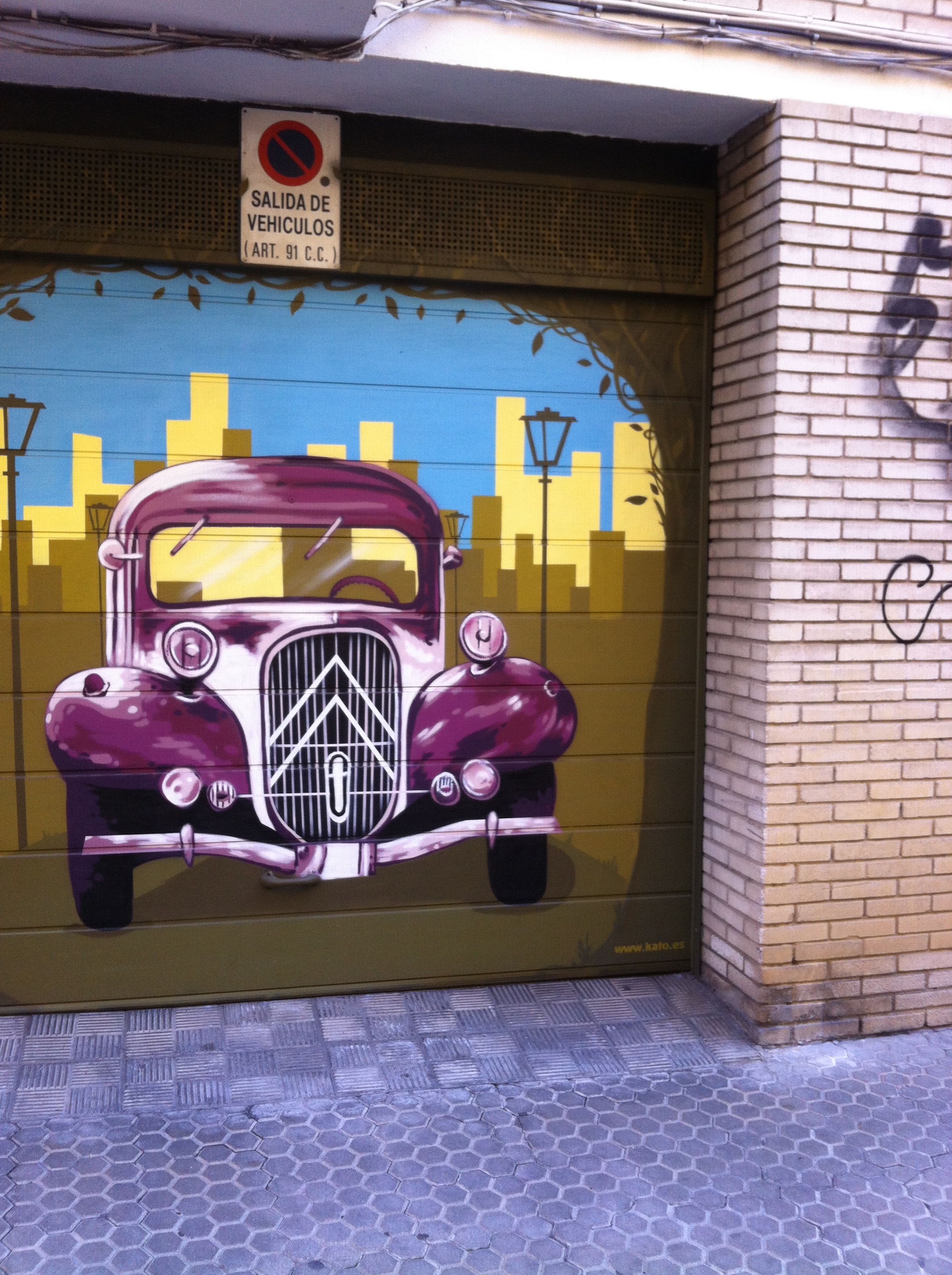
Vintage car fantasy? or is there really one in there?
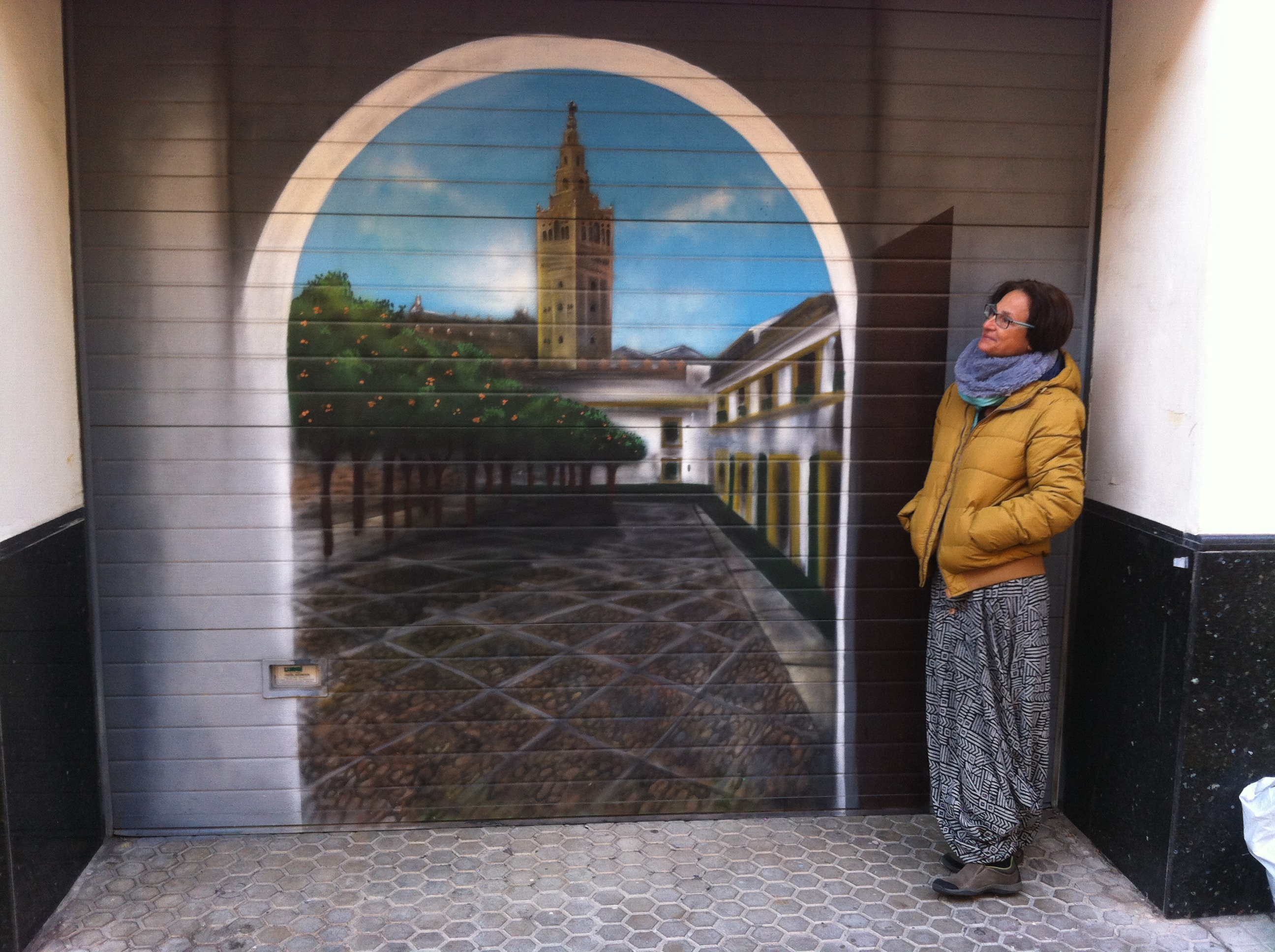
Love the doors that have paintings which reflect the architecture or streets in the surrounding area. This one even has the ubiquitous orange trees growing everywhere in the streets of Seville.
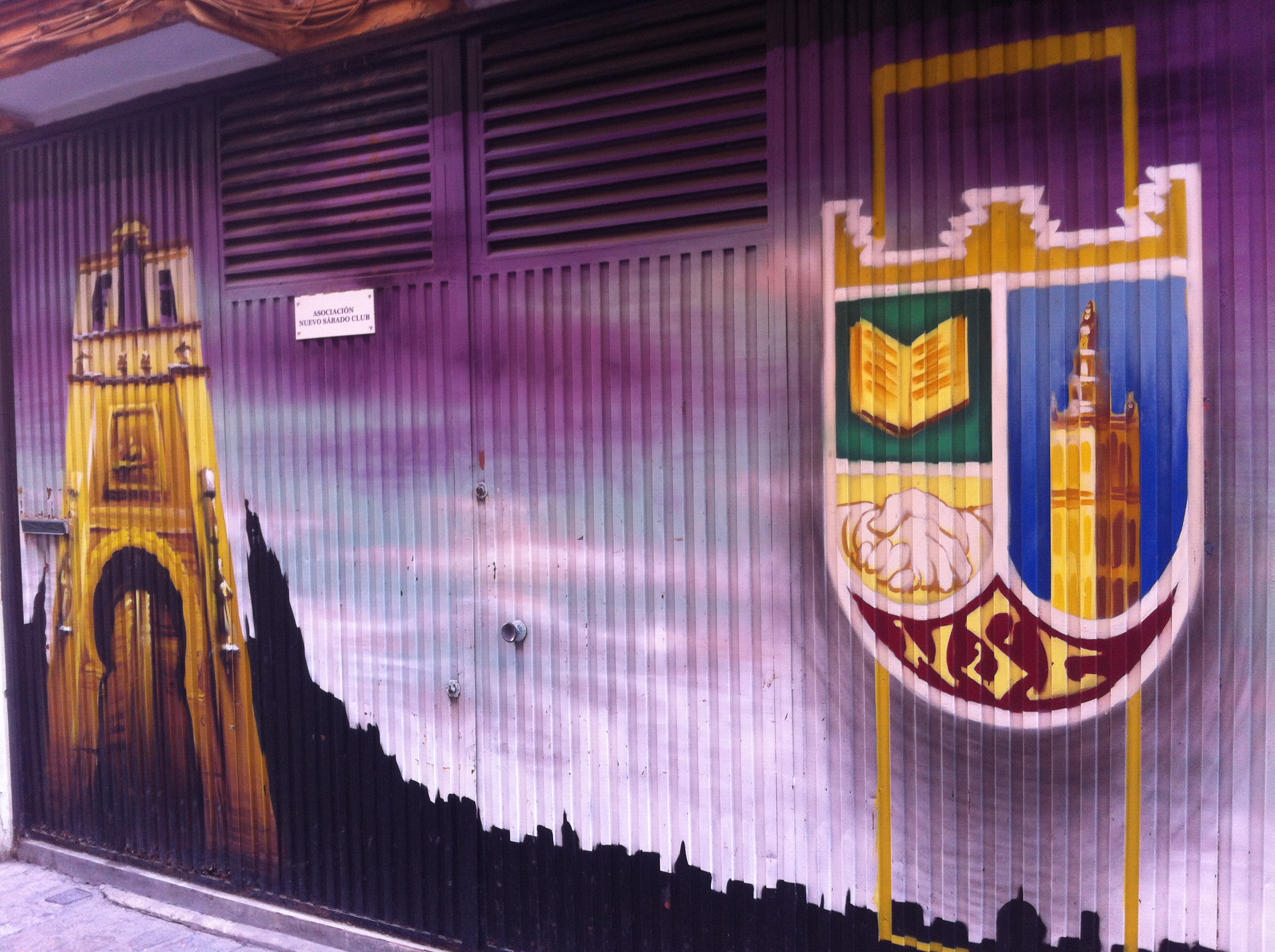
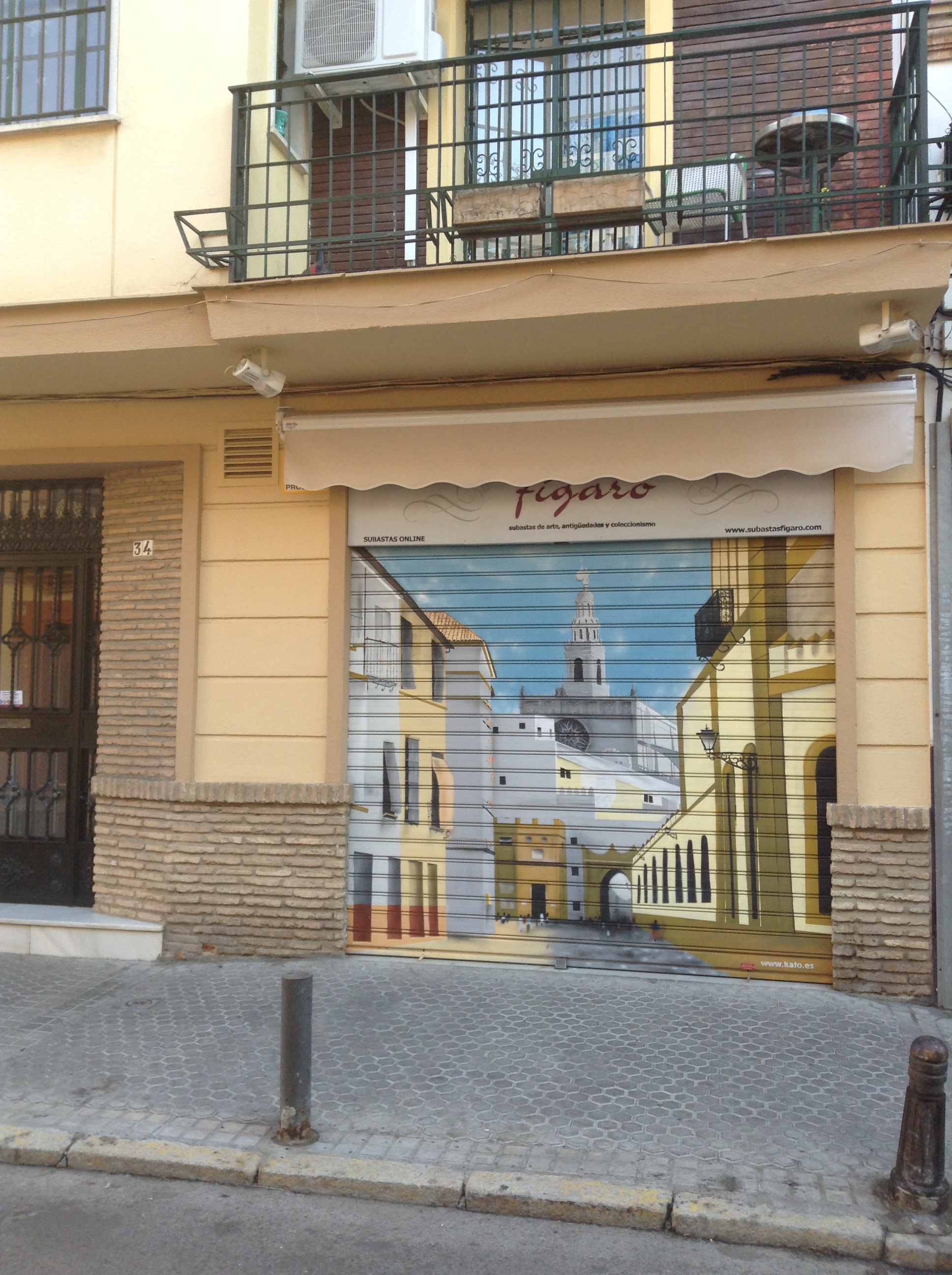
4) Fine art
If we wink at urban art, we would remiss to completely ignore the magnificent fine art that lies beyond large wooden doors. The city has multiple museums, churches and palaces where one can admire the city’s enduring artistic legacy.
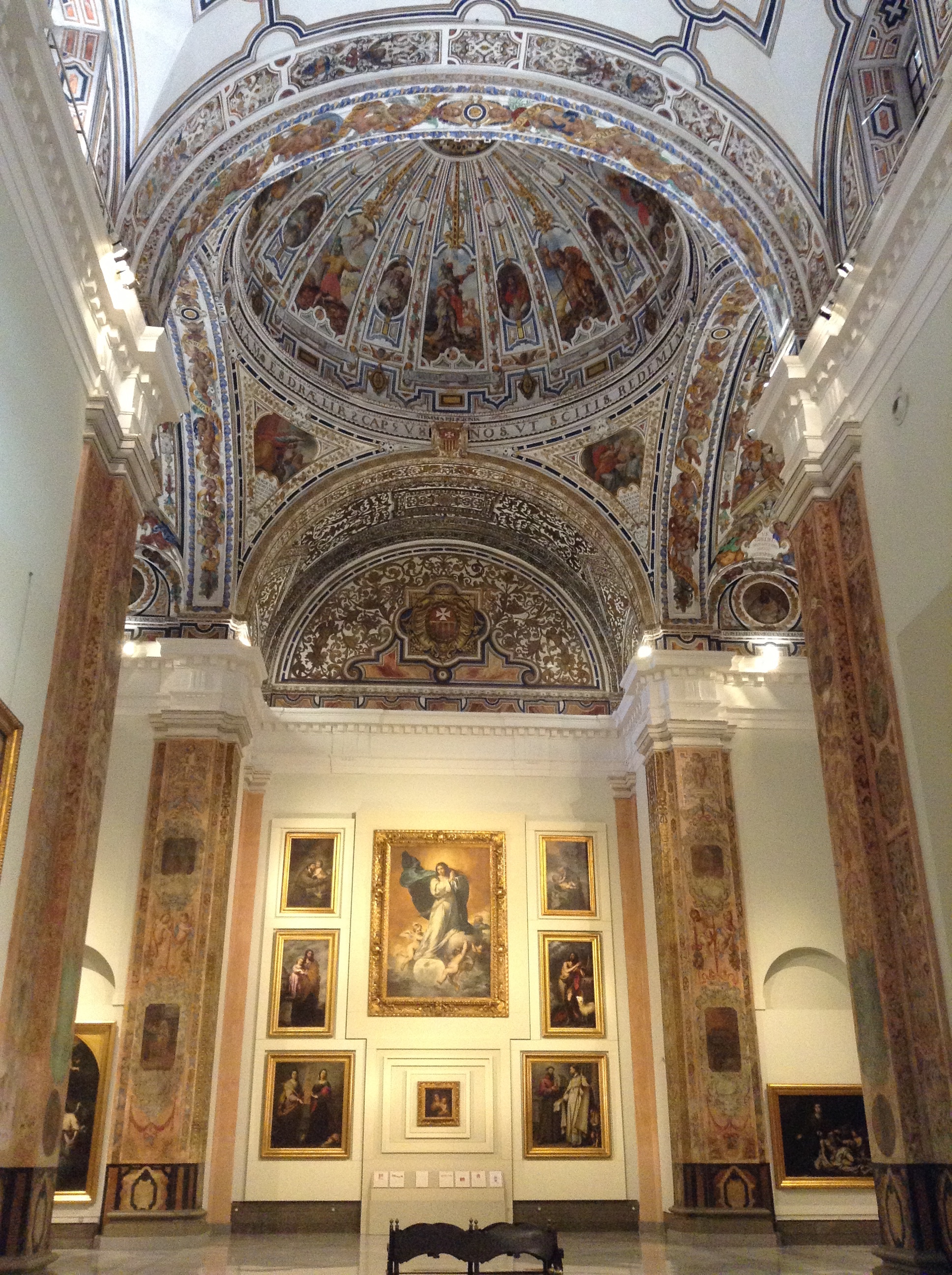
Interior of museum of Fine Art. Ceilings are super high and domed with painted panels.

Painting reflecting the Moorish conquest of Spain and subsequent domination during several centuries.

We see room after room of dark religious art, and then come across this bright nude with a more Impressionistic background of color and light.
5) Tapas!
Tapas bars are everywhere. Tapas rule! Small inexpensive plates of Spanish gastronomy. Always Iberia ham, variety of cheeses, olives, anchovies as a base of traditional fare. Then each bar adds some of its own favorites. At 2-3 euros a plate, it’s a great way to get a taste of Spain each day between 1 and 4 p.m. Tapas are most usually accompanied by a lot of beers.

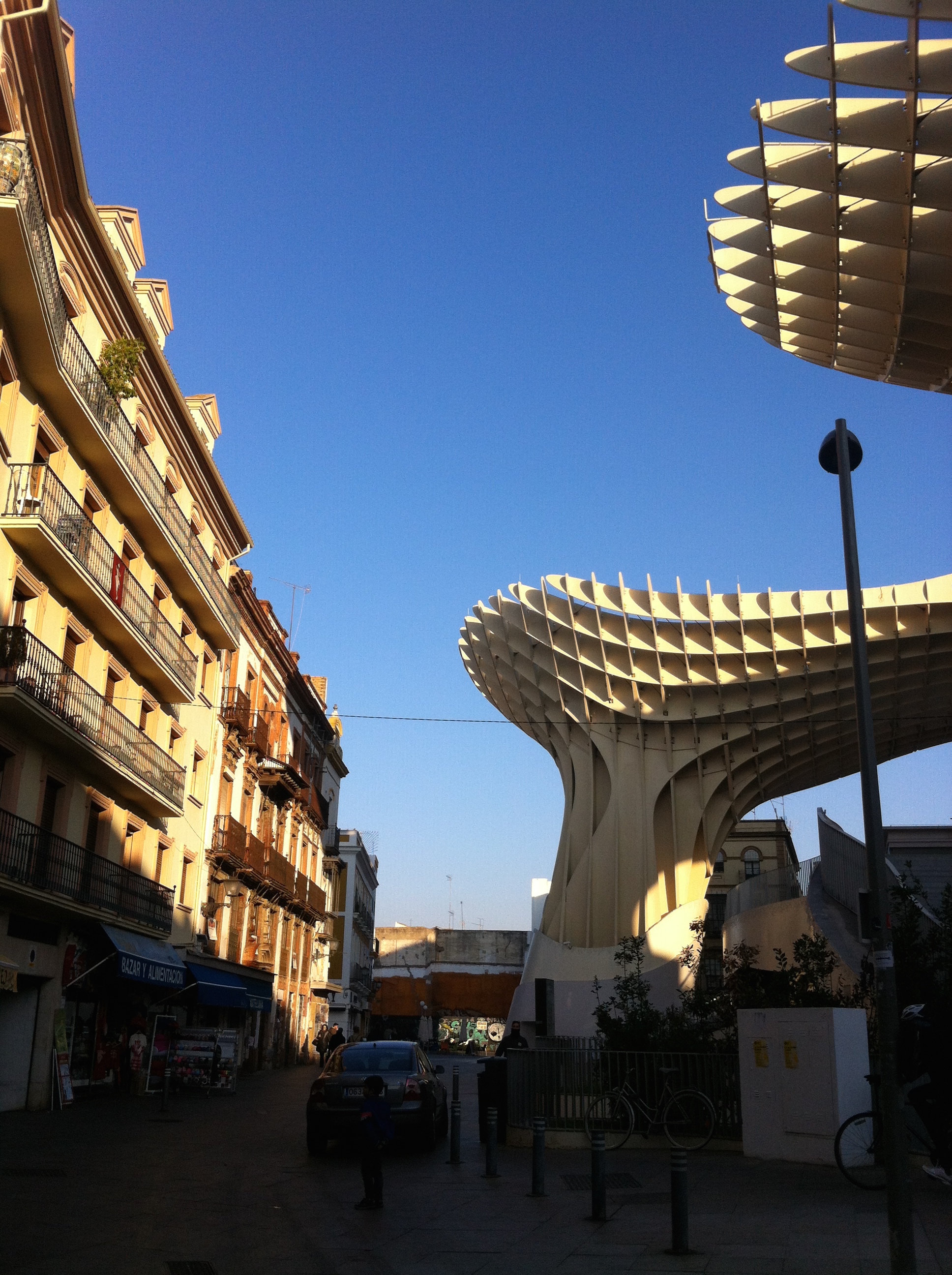
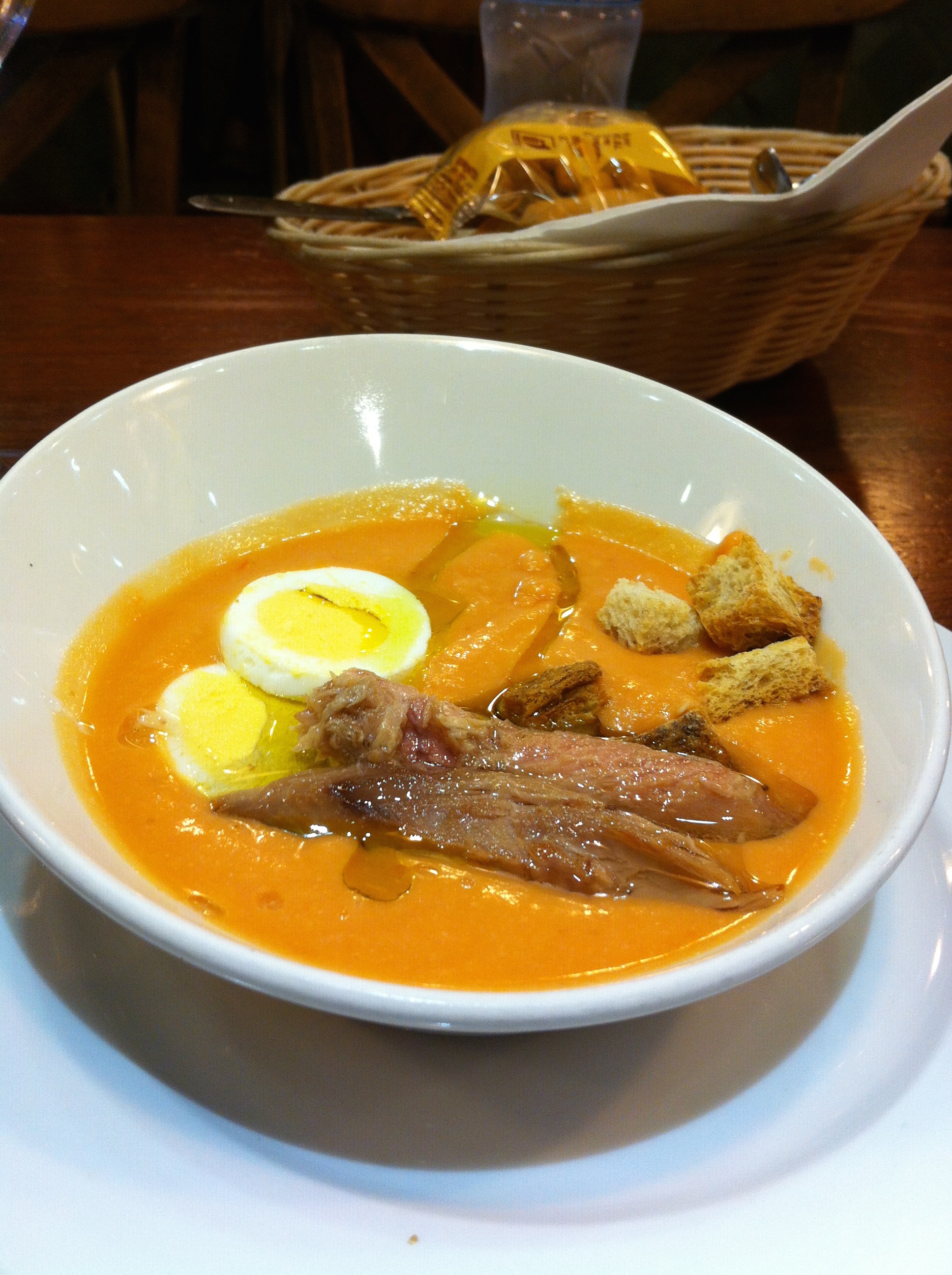
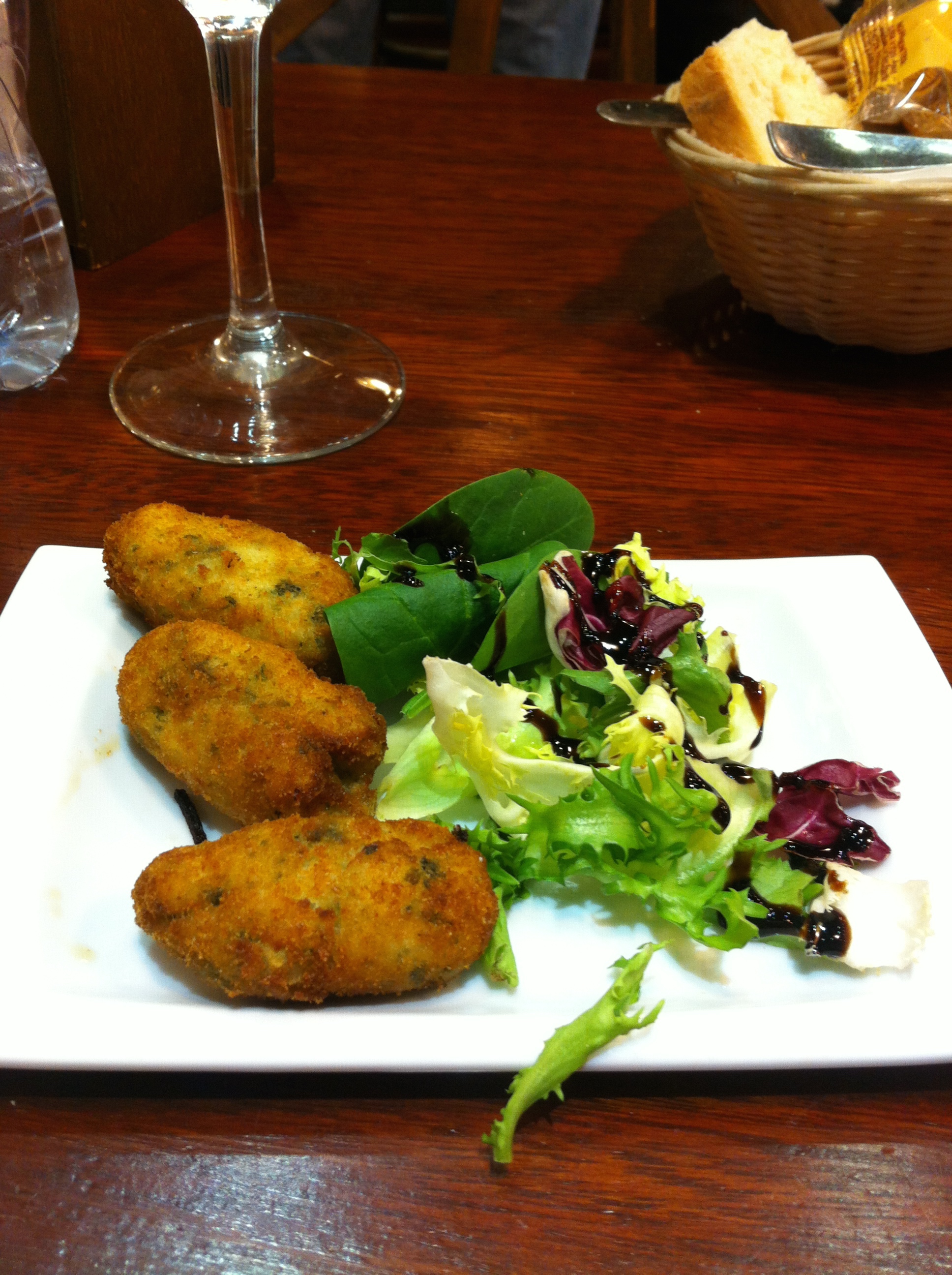

Takes me back a while, when we visited in 1995/6! The south is amazing!! Have fun!!!
Thanks Zwi…we are about to go to explore the natural reserves on the Almira coast near Mojacar, called “Cabos Del Gatos”. Stay tuned!
These photos remind me so much of our South America trip. The old, traditional structures mingled with fantastic modern furniture. They harmonize so well. Beautiful photos. Thanks for sharing.
Thank you Helga. Glad you are enjoying our blog and the photos. Latin America has been our home base for the past six years…(Nicaragua ~ you can see older blog posts on our time there.) Where did you travel in South America?
Seville looks amazing! How wonderful that you get to spend some time there.
Alison
From an architectural point of view this is one of the most beautiful cities in Europe that we have seen. A real treat! People are super friendly and we are enjoying speaking Spanish again. Very romantic city too!
So cool that your Nicaragua Spanish is working for you in the motherland. Are you picking up the new accent? Do you have an easy time understanding people?
Love your puffy yellow jacket!
It is fabulous to be speaking Spanish again! At first the accent was a bit tricky…being very different to Nicaraguan Spanish, but now we notice it less. The more time we are here, the less different it is!
Of course as always, speaking the language makes for a way more interactive experience.
I finally got a jacket! Its not super cold ( like Chicago) but we feel it, after 6 years or so of only a tropical climate and no winter whatsoever.
So beautiful. One of my favorites from your travels. Thanks for sharing!
Thanks Boyd! Glad you are enjoying our blog. It has been really nice to have extended time in Spain. We are now in Playa Mojacar on the coast at the foot of the Sierra Novada mountain range. Stay tuned….
Like you, I found Seville just as rewarding – if not more so – away from the tourist hot spots. Happy memories of our trip relived through this post – thanks.
So glad this post on Seville brought back such happy memories. Thanks for stopping by to read us and for commenting.
Ben